Last fall Deb & I spent seventeen days in Europe celebrating our thirtieth wedding anniversary and although I’ve already posted some pictures of the Colosseum it seems almost a year has passed and I’m just getting around to processing the images from our trip.
We started our trip in Rome and worked our way through Italy, Austria, Switzerland and France before returning to Rome for the flight home. The plan is post the next few blog entries encompassing our trip in a chronological fashion and I trust the photography gives you a good feel for the rich history and absolutely spectacular cityscapes and country sides.
Rome is one of the largest and oldest cities in Europe with a legendary founding in 753 BC. Its located approximately 20 km inland from the Mediterranean Sea on the banks of the Tiber River which meanders through the “Eternal City” as Rome is often referred to. This first image is a typical view of the Tiber River and the Castel Sant’Angelo which was built from 123-139 AD by Emperor Hadrian as his mausoleum. It now functions as a museum and is located just outside the gates of Vatican City.
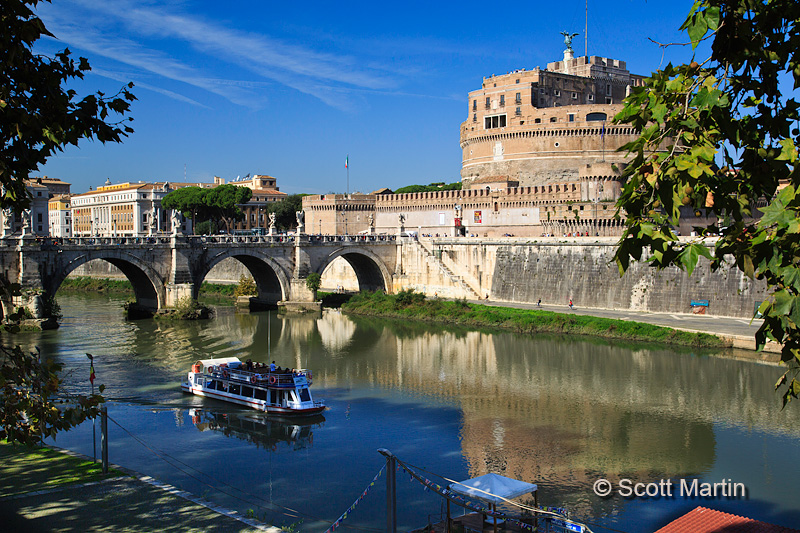
Rome is a city with many beautiful fountains, the most famous being the Trevi Fountain which was commissioned in 1629 by Pope Urban VIII but not completed until 1762. It is located at the intersection of three roads which were originally the sites of aqueducts bringing water into the city. The Trevi Fountain was refurbished in 1998 however a twenty month restoration was just beginning when we were there so much of the building behind the fountain was covered in scaffolding rendering good photographs of the fountain in its entirety impossible. The Fountain building facade is topped by the Papal Coat of Arms.
The Trevi Fountain is 86′ high and 161′ wide and every evening an average of 3,000 Euros are removed from the pool. It is a tradition for tourists to toss coins over their shoulder into the fountain for good luck and the someday assurance of a return trip to the fountain.
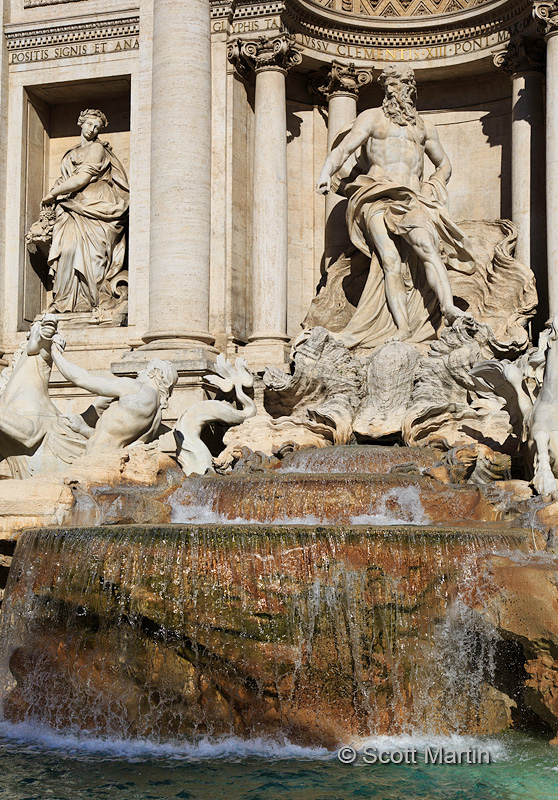
.
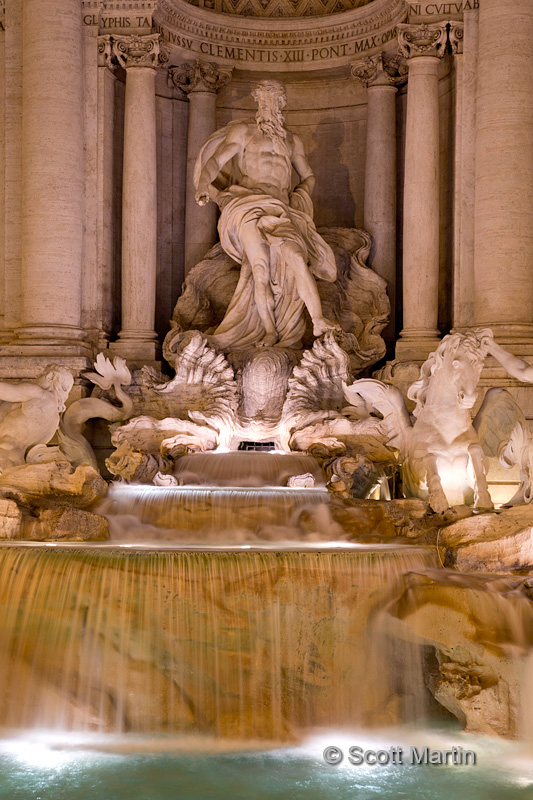
.
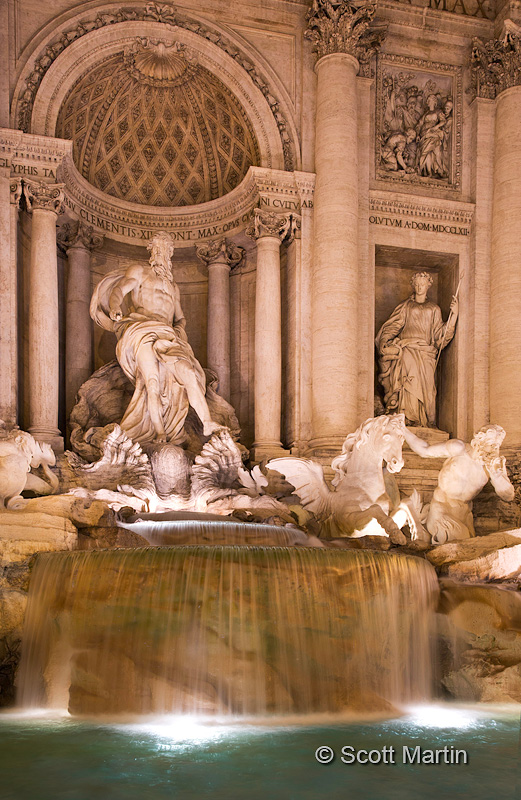
.
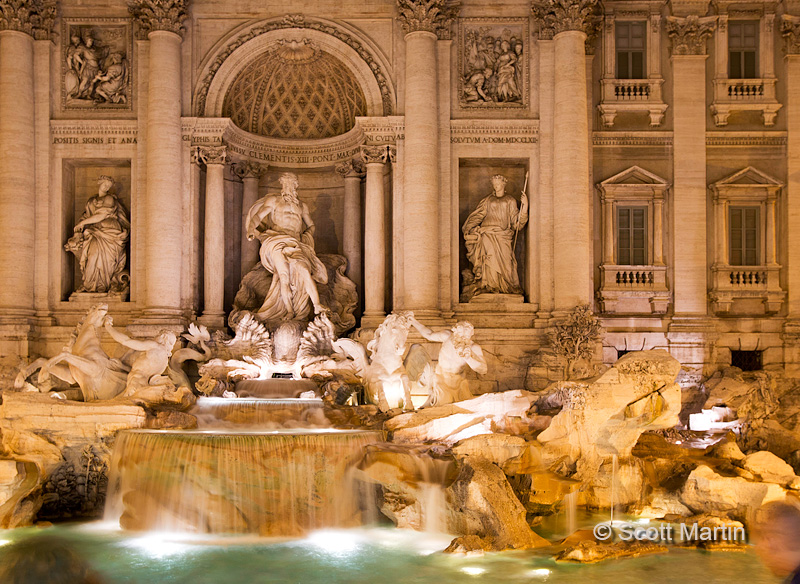
Not far from the Trevi Fountain are the 135 steps that form the widest staircase in Europe, known as the Spanish Steps although they were designed and funded by the French. The steps were completed in 1725 and lead up a rather steep slope to the Trinita dei Monti church.
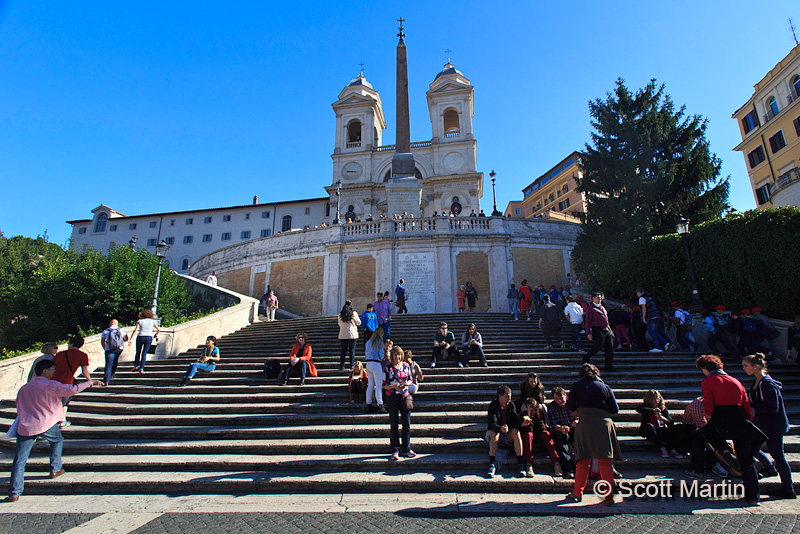
In a testament that pluralism is nothing new, the Pantheon, originally built in 25 BC and then rebuilt in 126 AD by Hadrian (about the same time he was building his mausoleum) has been in continuous use for almost 2,000 years! Although it was originally dedicated to all gods, since the 7th century it has functioned as a Catholic Church.
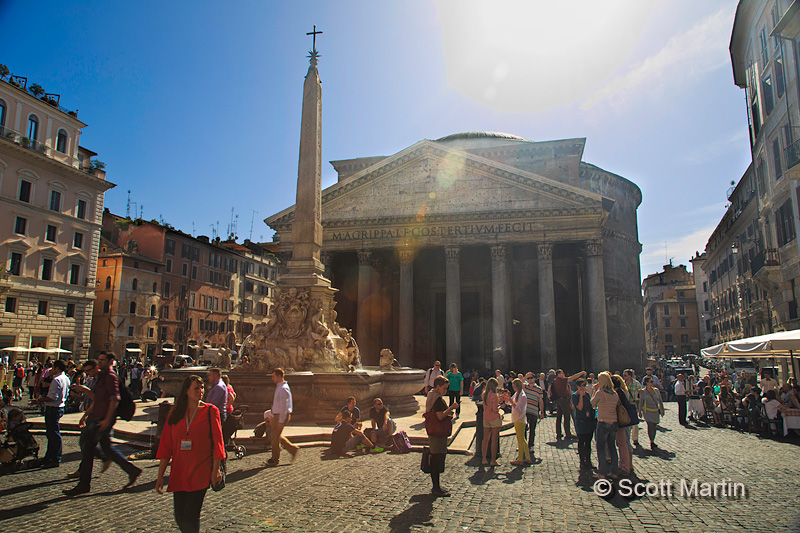
.
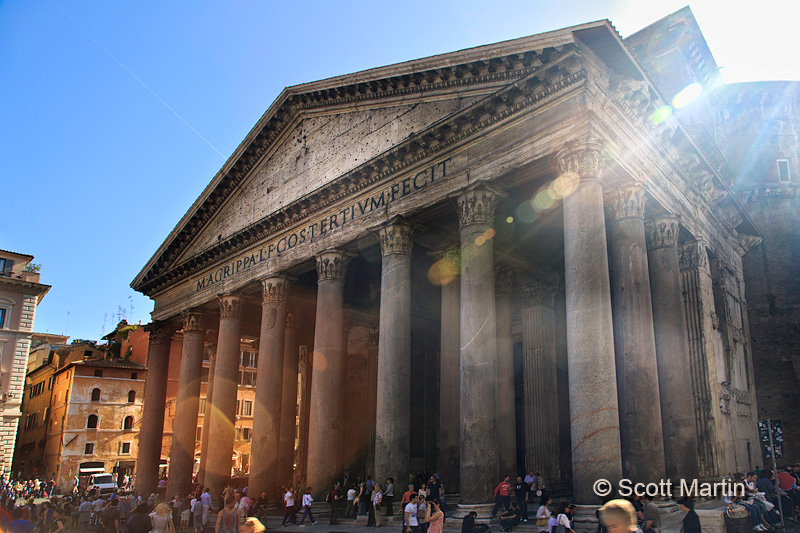
The building is a unique design that features a concrete dome with an open oculus at its apex which provides the natural light for the interior. The diameter of both the inner circle of the rotunda and the height from the floor to the oculus is 142′ meaning that a 142′ sphere would fit perfectly into the Pantheon.
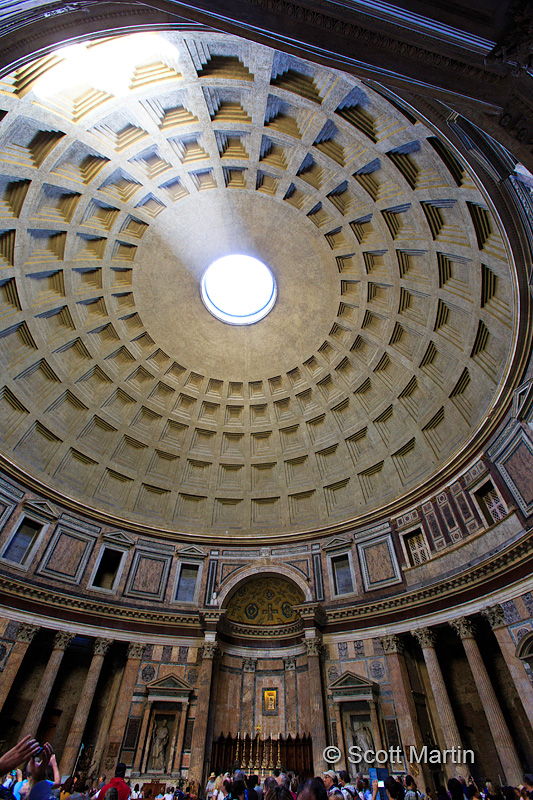
The concrete dome of the Pantheon is the largest unreinforced concrete dome in the world and its has been faithfully functioning for almost 2,000 years, truly an engineering feat. Inside the Pantheon there are a number of altars around the rotunda walls, most of them very ornate and detailed in every way.
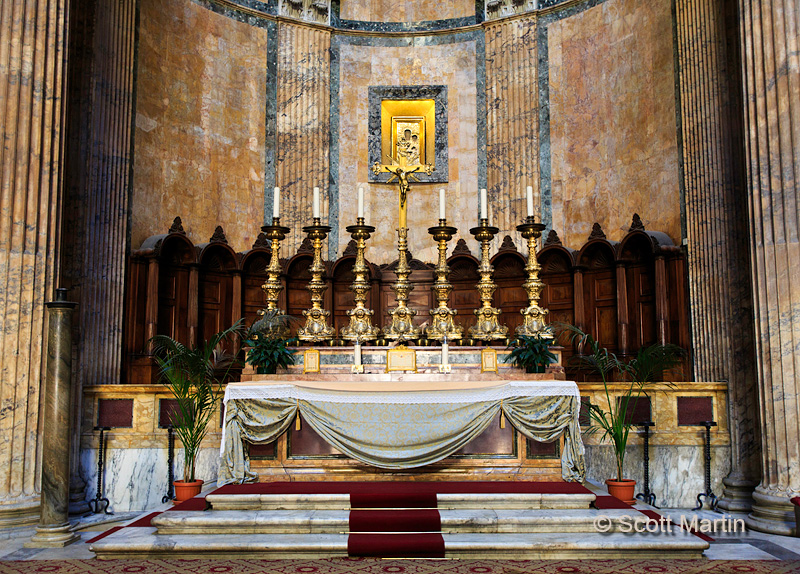
Arches are common throughout Europe and were typically built to celebrate military conquests (triumphal arches) or the victories of a ruler (honorific arches). The Arch of Titus was constructed in 82 AD to celebrate Titus and his military victories including the Siege of Jerusalem in 70 AD. The Arch of Titus also served for the design inspiration for the Arc de Triomphe in Paris.
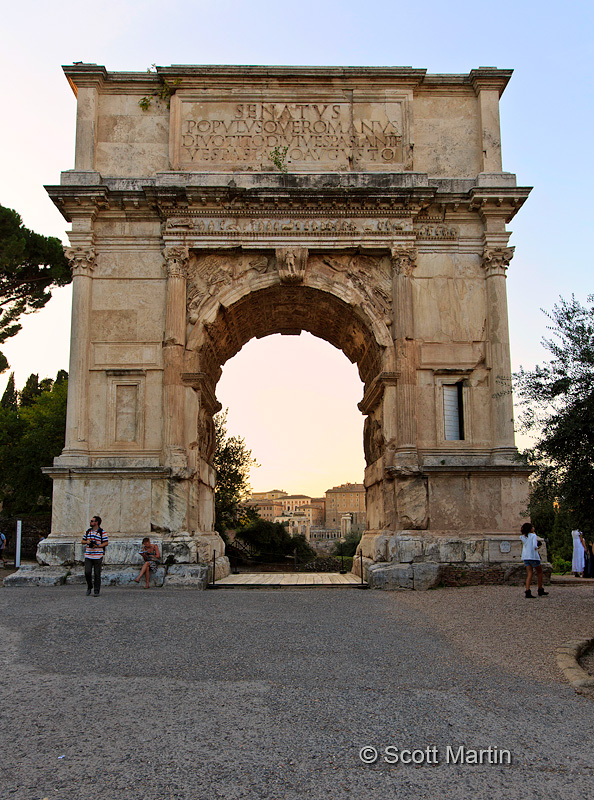
Only a few hundred yards from the Arch of Titus and just beside the Colosseum you will find the Arch of Constantine. It is the last of the triumphal arches that are still standing and was built and dedicated by the Roman Senate in 315 AD to celebrate the exploits of Constantine.
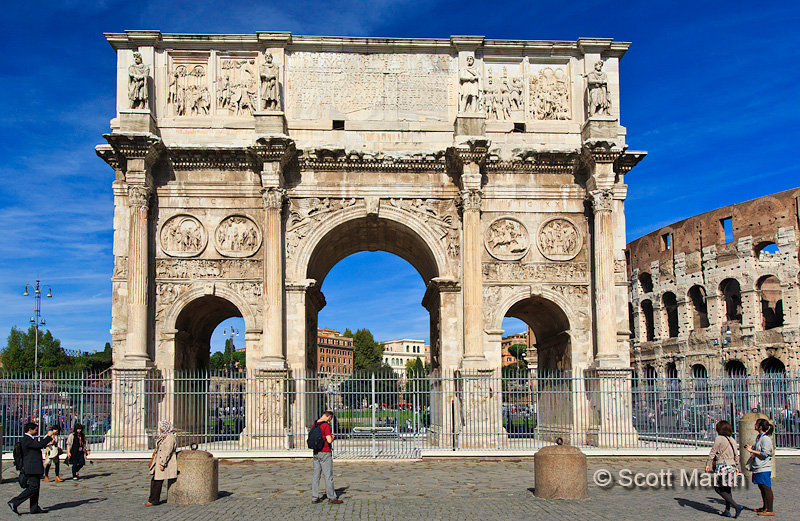
The Roman Forum lies in a valley between the Palatine & Capitoline Hills and was the literal, political, religious and social centre of Rome. As you wander through the forum today you can see the ruins of many structures, with the Temple of Saturn dating back to 497 BC. At the north-west end of the Forum is the Arch of Septimius Severus which was constructed in 203 AD. It is one of two remaining arches in the Forum (the other being the Arch of Titus). This next image shows the arch from an oblique angle. In the back ground is the church next to the Roman Curio and the column on the right of the image is of the Temple of Saturn.
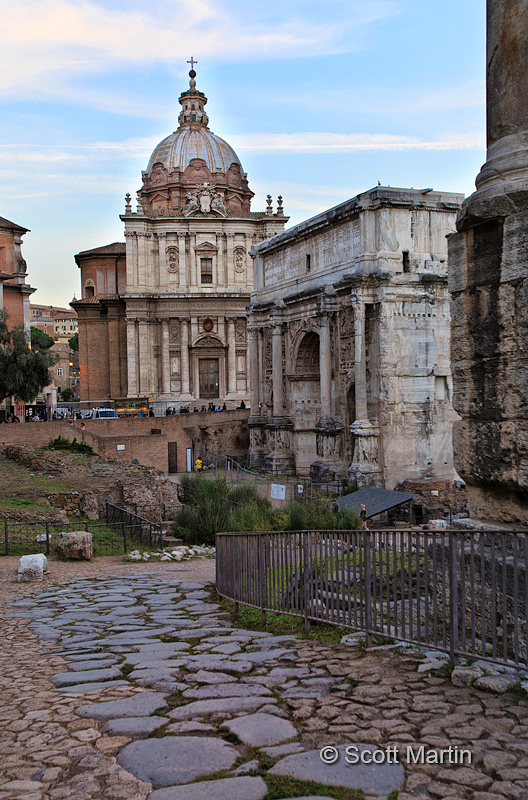
There is so much more to see in Rome and perhaps some day I will post ‘Chapter Two’ of sites in Rome, however the next instalment will be of a walled 110 acre independent city-state located completely within the city of Rome – Vatican City.


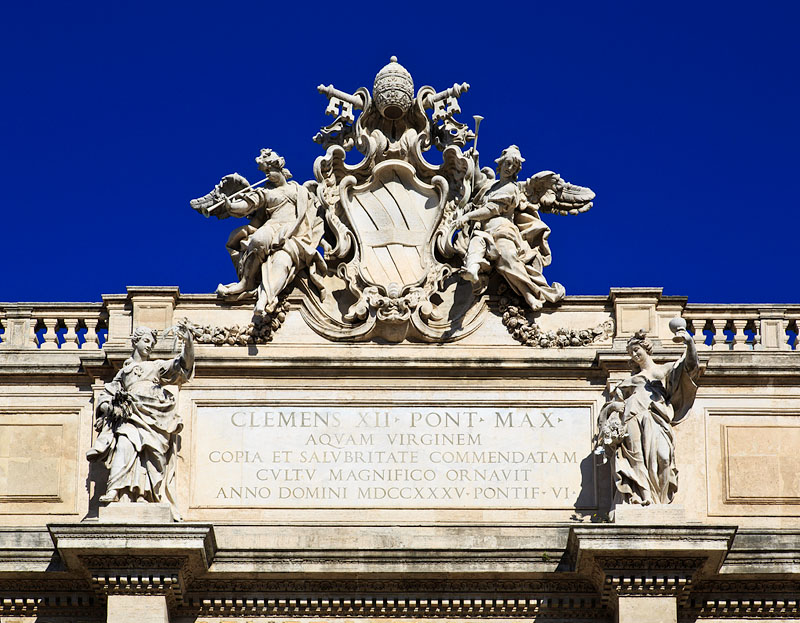
These images are just great! You have taken your typical tourist locales and created some very memorable creations. The accompanying narrative is most helpful and very interesting. It is very hard to pick a favourite but I am partial to images 2-4 of the Trevi Fountain.
Thanks Arni, Rome is a spectacular city and a lot of fun to photograph. We cant wait to go back again!
Simply stunning shots Scott. Got to look at getting there next year.. Thanks for the commentary. – really great
Thanks Rob and I’ve got the ‘perfect’ 17 day itinerary for you!
Absolutely amazing pictures Scott, combined with your descriptive commentary! Looking forward to the next installment!
Thanks Dad and I hope the wait isn’t as long for the next post as it was the last!